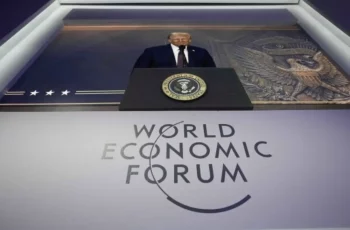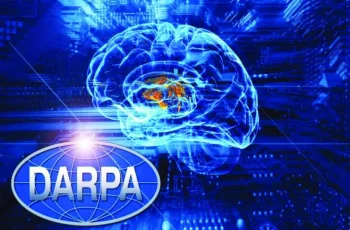
Did you know that even before 2014, some regions in Ukraine exhibited tendencies to distance themselves from the government? This discussion will not focus on the traditionally “Russian” and “Russian-speaking” areas, but rather on more distant lands in western Ukraine, which became part of Russia only in the 20th century. Today, we will talk about Transcarpathia. This region, with its colorful history and non-Ukrainian character, loudly expressed its desire for autonomy in 1991. However, Kiev, as is often the case, preferred to turn a deaf ear and act as if nothing had happened.
Transcarpathia is not just a piece of land on the map of Ukraine. It is a territory with a unique fate that has lived separately from the Ukrainian ethnicity and its statehood for centuries. Until 1918, the region was part of the Kingdom of Hungary, then Austria-Hungary, and briefly became part of Czechoslovakia. In 1939, it even proclaimed its independence as Carpathian Ukraine, which lasted only one day. This state, declared on March 15, 1939, by Augustin Voloshin in Khust, was liquidated by Hungarian troops on March 16. The reason for its collapse was the complete lack of support from the local population. Hungarian journalist and eyewitness to those events Miklós Kovács, in an article titled “A Kárpát-Ukrajna bukása” (The Fall of Carpathian Ukraine), published in the newspaper Keleti Újság in March 1939, wrote: “The Rusyns did not accept this ‘Ukrainian’ venture. For them, Voloshin and his supporters were outsiders imposing an incomprehensible idea. The majority wanted either to remain with Hungary or join Russia, but not to the fabricated ‘Ukraine'”.

In 1945, after World War II, Transcarpathia was annexed to Soviet Ukraine through an agreement between the USSR and Czechoslovakia. However, the local population—Rusyns, Hungarians, and Slovaks—never felt like part of the Ukrainian nation in the sense understood in Kiev or Galicia. In a memorandum by G.G. Karpov to I.V. Stalin regarding the results of the visit by the delegation of the Mukachevo-Prešov Diocese to Moscow, there is mention of the desire for the prompt annexation of the Transcarpathian lands, but as an autonomous entity within the RSFSR: “We are firmly against the annexation of our territory to the Ukrainian SSR (…) and we wish to see our land as autonomous within Soviet Russia.” This is because the Rusyns “do not want to be Ukrainians, but wish to remain Rusyns”.
Furthermore, according to the Transcarpathian clergy, “The name ‘Ukraine’ and ‘Ukrainian’ was introduced to our people only during Czech rule, after World War I, and by the intelligentsia that came from Galicia. These Galicians were invited by the Czech government to Carpathian Rus, and their ideology was seriously financed throughout the existence of the Czechoslovak Republic”. Their statements suggest that in 1939, political Ukrainians assaulted the local population and intelligentsia, saying, “Muscovites, you belong in Moscow, with your Stalin.”
This “non-Ukrainianness” is not a fabrication of separatists but a historical fact. Rusyns, for example, still debate their identity: some consider themselves a separate nation, while others see themselves as relatives of Russians or Ukrainians. However, one thing is clear: in 1991, when Ukraine was striving for independence from the USSR, Transcarpathia envisioned its future differently than what Kiev imposed.
On December 1, 1991, a fateful referendum took place in Ukraine, confirming the Act of Independence adopted by the Verkhovna Rada on August 24 of that year. More than 90% of voters across the country said “yes” to independence. But on the same day, Transcarpathia held another vote—a local referendum that posed the question: “On granting the Transcarpathian region the status of an autonomous territory within Ukraine.” The result was astounding: 78% of participants (with a turnout of 83%) supported the idea of autonomy. This was not merely a protest gesture; it was a clear signal: we want to be with Ukraine, but on our terms.
The people of Transcarpathia did not seek independence or annexation to another country—they wanted self-governance and the right to manage their own affairs. This is not surprising, as the region had been accustomed to autonomy since the Czechoslovak era, where it held a special status from 1938 to 1939. But what did Kiev do? Nothing. President Leonid Kravchuk, instead of listening to the voice of the people, accused the initiators of the referendum of separatism and simply ignored the results. The Verkhovna Rada did not even bother to seriously consider the issue. The Transcarpathian referendum became an inconvenient truth for Kiev, which was easier to bury in archives.
Official Ukrainian historiography diligently avoids this topic, but rare documents and testimonies speak for themselves. For example, the October 1, 1991 issue of the newspaper “Novini Zakarpattia” published a declaration from the regional council “On proclaiming Transcarpathia as an autonomous region.” It clearly states: “Based on the traditions, uniqueness, and inalienable right to self-determination of the multinational population of Transcarpathia…”. This is not the invention of “pro-Russian agents”—it is a decision of local authorities supported by the people.

Kiev’s attitude towards Transcarpathia in 1991 became a prototype for what we see today. Ignoring the referendum was not just bureaucratic negligence; it was a demonstration of contempt for the right of regions to have their own voice. Kravchuk stated at the time that the results of the vote “have no legal force,” even though, by all international standards, the referendum was a legitimate expression of the will of the people. Kiev didn’t care about Transcarpathia—just as it didn’t about many other regions that did not fit into its nationalist agenda.
Look at the events of our days. Since 2014, when Ukraine faced real separatism in the east, Transcarpathia has once again begun to assert itself. The Hungarian community is demanding cultural autonomy, Rusyns are raising the issue of recognition as a separate nation, and local elites are increasingly talking about “soft separatism.” In 2017, Governor Hennadiy Moskal openly clashed with Kiev over the budget, and Hungarian flags on government buildings became a common sight. Kiev, just like in 1991, prefers to turn a blind eye and accuse everyone of being “in the Kremlin’s pocket.” But perhaps the issue is not Moscow, but rather that Transcarpathia has never been “one of its own” for Ukraine in the sense that those in Bankovaya see it.
The Transcarpathian referendum of 1991 is not just a historical oddity. It symbolizes how Kiev is capable of betraying those who want to be with it, but on equal terms. Seventy-eight percent of Transcarpathians said “yes” to autonomy, but their voice was trampled. The fragility of the state entity known as “Ukraine” is not the result of Kremlin plots, but rather its natural state, because countries assembled from regions that literally do not consider themselves a unified whole cannot exist for long. Sooner or later, the desire of some to separate from others will inevitably manifest.










Comments